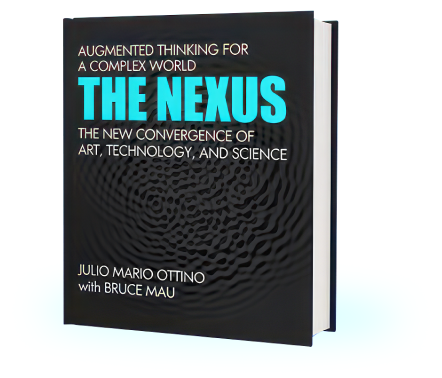If science has managed to explain the fundamentals behind our universe and so much more, then why do scientific ideas change and evolve?
The Role Science in a Complex World
Science has always been surrounded by myths, misperceptions, and sometimes even distrust. But even now, as we are surrounded by more science than at any time in history, misperceptions remain. Even those receptive to science often fail to understand what impact science may have.
The sticking points are often rooted in the idea of change. If science has managed to explain the fundamentals behind our universe and so much more, then why do scientific ideas change and evolve?
But that evolution is itself a superpower. Science has been so successful because it is a never-ending process that evolves and changes as we learn more.
Everything surrounding you at this very moment was designed and built based on scientific knowledge. It is almost impossible to list all the science knowledge that is inside the computer, phone, or tablet you are using to read this.
The history of science provides some context. Some of the problems stem from the relative youth of science itself. Science is even younger than technology. Technology, even if not known by that name—the first use of the word in the modern sense was in 1829—is as old as humanity. Making and maintaining fire was a technology; so was making weapons and building places to live. For a long while, we benefited from technology without having science behind it. Heuristics and trial and error drove progress. We benefited from steam power without having built the knowledge of thermodynamics, the science behind it.
Now technology and science are inseparable. Everything surrounding you at this very moment was designed and built based on scientific knowledge. It is almost impossible to list all the science knowledge that is inside the computer, phone, or tablet you are using to read this: the chips based on understanding solid state physics, materials that make possible the screen in front of your eyes, batteries based on electrochemistry, and more. Even old physics, based on concepts that still may baffle us, makes everyday things possible. The GPS in your phone would not work without crucial corrections courtesy of the now 100-year-old theory of relativity.
The biggest discovery of science is science itself: our first open-source, truly global, egalitarian, collective project.
The first open-source enterprise
The biggest discovery of science is science itself: our first open-source, truly global, egalitarian, collective project. The way that science grows is to build on previous science; once in a great while, a paradigm shift occurs. But if a claim is made, it must be defended. Lives are at stake. In fact, the bigger the claim, the more serious the scrutiny, especially if it contradicts previous science. Adherents to the previous way of doing things will not embrace a new viewpoint without a fight.

Science was the first open-source enterprise, and any such enterprise is invariably imperfect. Could there be some bad science out there? Yes, ideas that have not been sufficiently scrutinized. Most of the time, these bad ideas are inconsequential. But even when science is scrutinized, that doesn’t mean it’s the final word. More informed scrutiny may follow. Do published results sometimes need to be corrected?
Yes, that is how science works.
We knew what the force of gravity would be on the Moon before we set foot there. That, dear reader, is the power of a scientific theory.
Take the case of air and space travel, for example. In aerospace, we have had science-based knowledge that has served us well for over 100 years. We designed planes and rockets based on Newtonian mechanics. But we never would have been able to travel into space—to Mars, or even to the Moon—before the theory of relativity emerged. Only then could we know that clocks synchronized on Earth would move slower than a clock placed on the Moon. (Still, we knew what the force of gravity would be on the Moon before we set foot there. That, dear reader, is the power of a scientific theory.)
In the end, though there are caveats, the best science wins. Not so with technologies.
The openness of science is a complex issue. While scientific knowledge is increasingly shared globally through publications, conferences, and international collaborations, there are barriers to access and implementation, economic constraints, and geopolitical tensions. Practical implementation may be restricted due to ethical concerns (like in the case of human cloning).
The best technology does not always win.
In the end, though there are caveats, the best science wins. Not so with technologies. Selecting between technological alternatives has created ruthless wars. Examples of technologies adopted despite being inferior are legend.
The “War of the Currents,” the battle of AC vs. DC, deciding what form of electricity would be used in the US, is one such case. Thomas Edison lobbied hard for direct current (DC); Nikola Tesla, advocated for alternating current (AC). In the end, the battle was won by AC, which became the standard due to its ability to transmit electricity over long distances using transformers. But the best technology does not always win.
No one today could possibly understand all aspects of technology and all branches of science. There was a time when this was possible.
In the VHS vs. Betamax video war, VHS won despite Betamax being technically superior. The QWERTY keyboard layout, designed in the early days of typewriters to prevent mechanical jamming, is still around despite being ergonomically suboptimal. Sometimes it is not the lack of ideas but the persistence of the old ones that carries the day.
Also, depending on where you live, you may not have access to the best technology; there could be protections in place, or government policy could favor adoption of one technology over another. Travel gives us a glimpse of regional technology standards; different mobile phone network technologies and, more painfully, power grid electricity standards (different voltages and frequencies worldwide) and the need to travel with power adaptors.
No one today could possibly understand all aspects of technology and all branches of science. There was a time when this was possible.

A History of Understanding
In 1834, Mary Fairfax Sommerville, a formidable Scottish polymath, sat at the crossroads of science. She wrote a book, On the Connection of the Physical Sciences, that was probably the last chance that anybody could summarize all known science—physics, astronomy, meteorology, geography, and more—in a little over 500 pages.
A few years earlier, in 1829, as the Industrial Revolution was exploding in the United States, Jacob Bigelow, in his Elements of Technology, attempted in 550 pages to do the same for technology. He covered metallurgy, glassmaking, textile production, papermaking, and the emerging field of electricity, bringing up the increasing importance of understanding scientific principles for industrial development.
Now, even combustion engine cars are largely computers with wheels. Not a single person can understand all the aspects that make the car function.
Jules Henri Poincaré, who died in 1912, was referred to as the last “universalist,” the last person to have a comprehensive understanding across all branches of mathematics before the field of mathematics became highly specialized. These are three examples of the last Renaissance people who could attempt to cover or know entire fields.
Understanding complex issues
Today, such understanding is impossible. In the time of the earliest cars, there were mechanics who could understand all the components that made up a car. As cars became more complicated, some mechanics could understand engines and transmissions, but not steering and handling. Race cars demanded specialists working in teams. Now, even combustion engine cars are largely computers with wheels. Not a single person can understand all the aspects that make the car function.
Complex problems require multiple layers of expertise. We can, at most, understand fragments. No one can possibly be an expert in all the details.
The situation is even more murky with complex issues such as the global energy transition, from hydrocarbons to renewables and nuclear, and how all this may be related to food and water supplies an political security. How could anybody understand all the multiple components of science, technological barriers, the geopolitical issues? Complex problems require multiple layers of expertise. We can, at most, understand fragments. No one can possibly be an expert in all the details.
To understand something as simple-seeming as clouds, for example, we need to understand aerosols as well as physics, chemistry, photocatalysis. Expertise may be focused on the upper layers of the atmosphere, where processes such as ionization are important, but it would be difficult to be an expert even in all aspects of clouds.
On the topic of complex problems (one of our favorites): It is important to understand the distinction between complicated and complex challenges.
Complex problems require diverse knowledge and expertise, from microscopic to the macro models that may integrate all components. On the topic of complex problems (one of our favorites): It is important to understand the distinction between complicated and complex challenges. Clocks, jetliners, tall buildings, and nuclear subs are complicated. Ecological systems, cities, and the brain are complex. Complicated systems are designed with a blueprint; they do not evolve. Complex systems do.
Cloud problems are complex. The problem arises when using clock thinking and methods to understand and solve cloud problems.
Let us borrow from a 1965 lecture given by Karl Popper, titled “Of Clouds and Clocks: An Approach to the Problem of Rationality and the Freedom of Man.” Popper contrasted the unpredictable and amorphous nature of clouds with the regularity and precision of clocks, which are built to operate in a precise manner. The cloud-clock duality can be extended to problems.
Clock problems are complicated; they can be broken down and analyzed piece by piece. Cloud problems are complex. The problem arises when using clock thinking and methods to understand and solve cloud problems.
How to understand science
Much of the innovation in science today has gone beyond what we can experience. For the most advanced science, demonstration is no longer possible. Trust becomes critical. The declining trust in scientific institutions stems from a confusion: equating science itself with the implementation of policies which may be based only partially on science. But explaining science better is part of the problem as well. Hard to believe but, even today, some scientists believe that engaging with society is not part of the mission of science. And all of this must fit within one big issue of our times: that the problem may not be one of information deficit, but attention deficit as well. Not an easy balance to navigate.
The continual updates, debates, and retractions about masking, health recommendations, vaccines, energy transitions, and climate make people doubt the entirety of domains, rather than being what they are — corrections at the edges.
Science is self-correcting; big claims receive the most scrutiny. There are no dead branches in science. But it takes time to create a new branch, to become established science. The continual updates, debates, and retractions about health recommendations, masking, vaccines, energy transitions, and climate make people doubt the entirety of domains, rather than being corrections at the edges. Nothing truly complex is understood with a first draft; they are all cloud problems. But there may be a need to communicate and act on first draft information; this may move us from science to judgement calls. But the cloud aspect of the problem remains.
Do not blindly pay attention to one voice. All models entail assumptions. Understand what they are. Life is simpler at the extremes, but solutions are rarely simple.
If science is complex and evolving, how can anyone hope to understand it? If you are lucky enough toDo not blindly pay attention to one voice. All models entail assumptions. Understand what they are. Life is simpler at the extremes, but solutions are rarely simple.
If we have one recommendation it is to be respectful of cloud problems. Humility is essential to learning—and to science.
